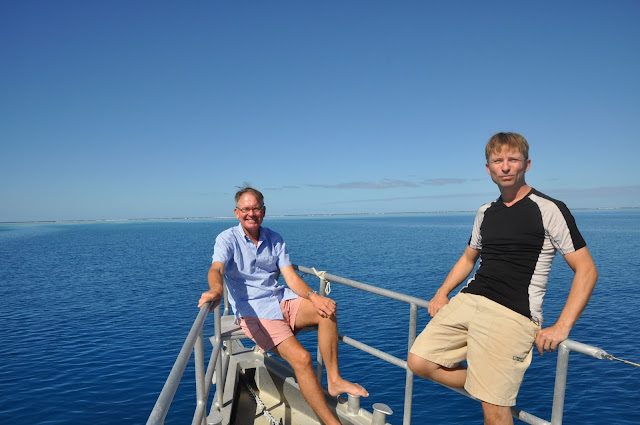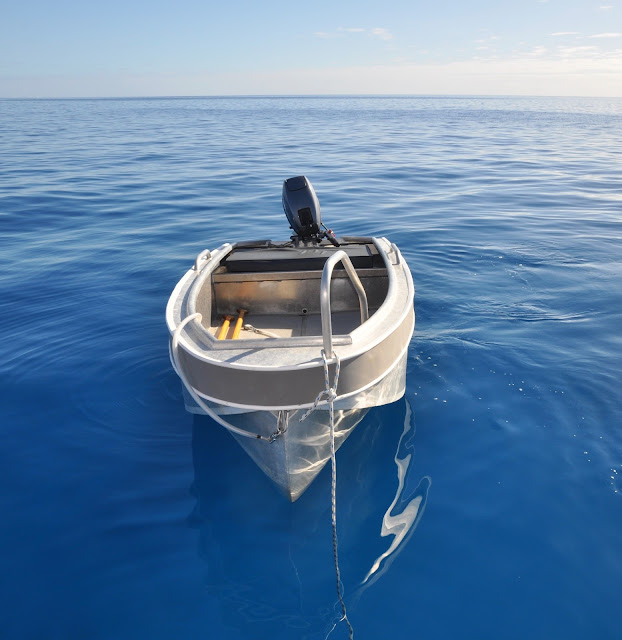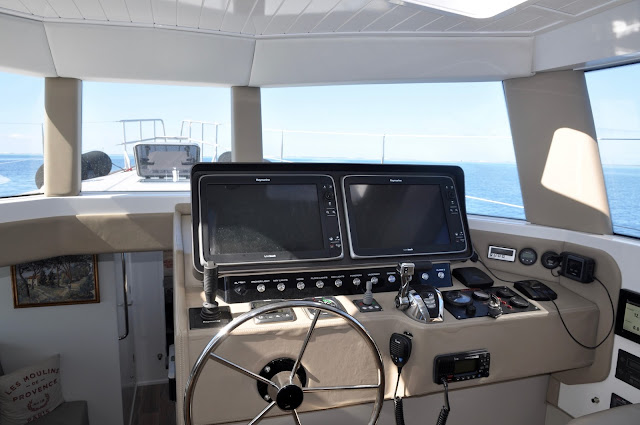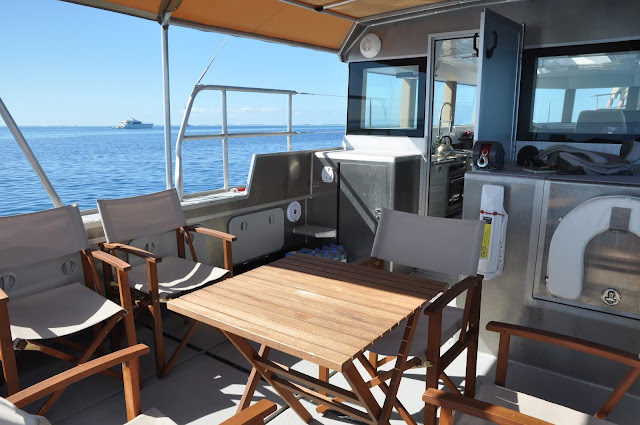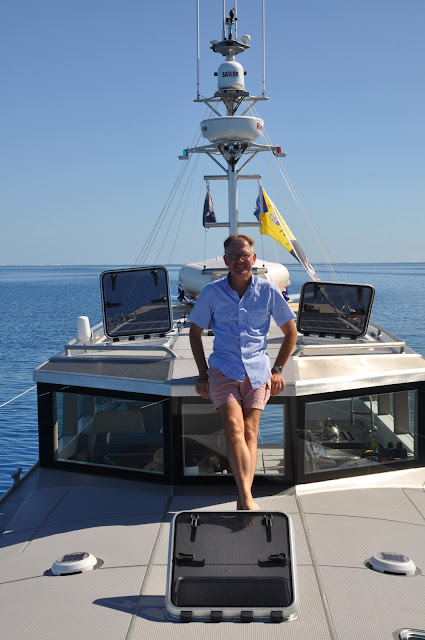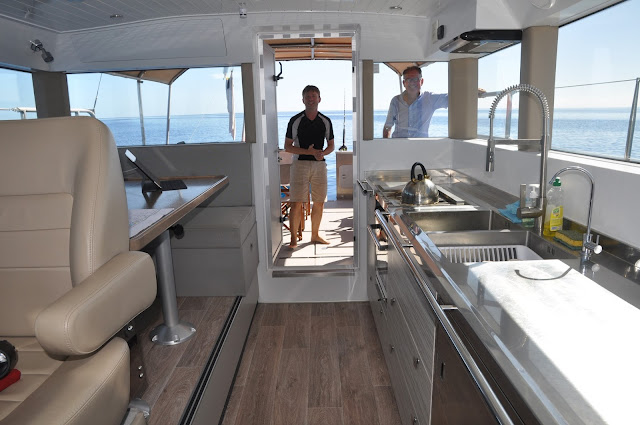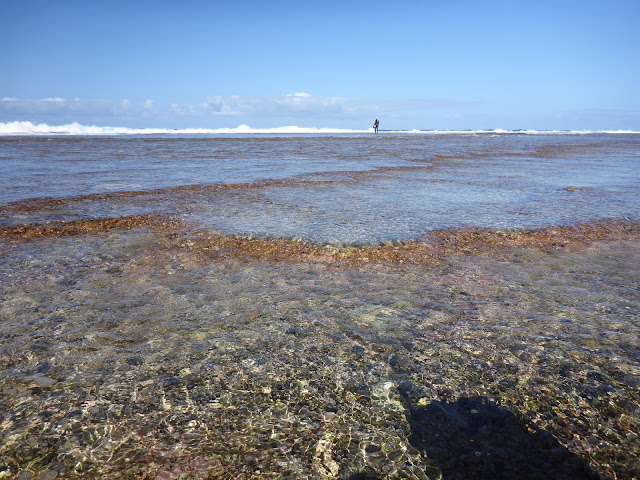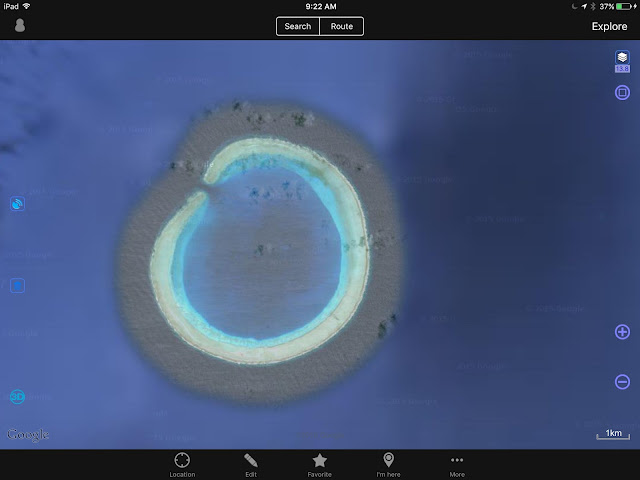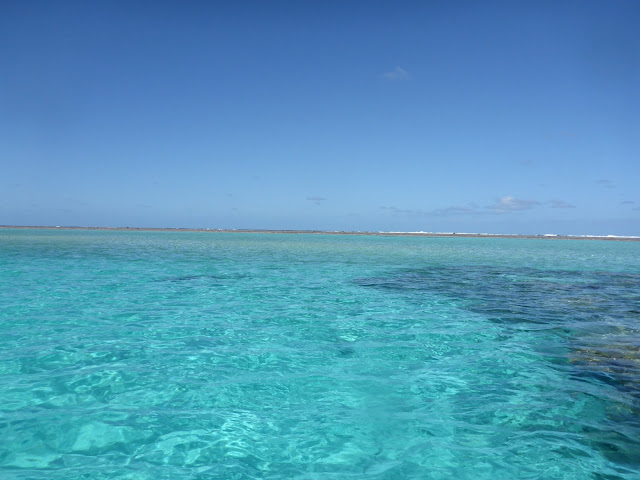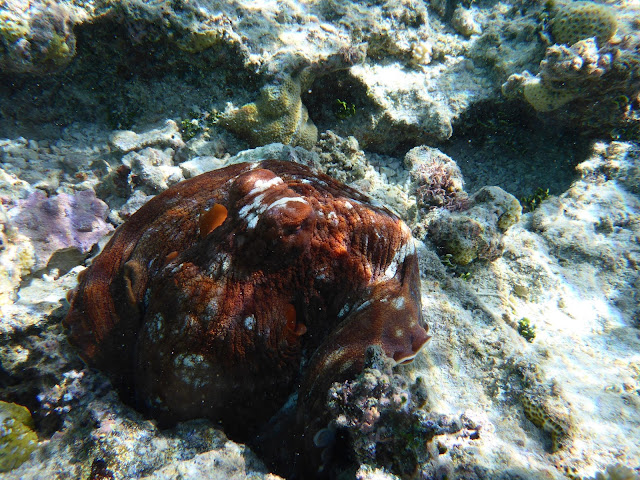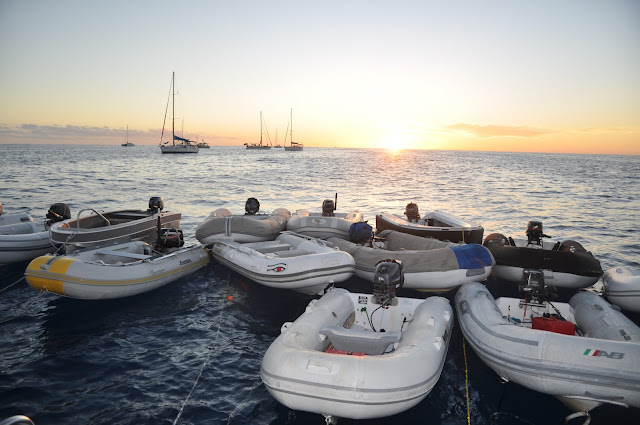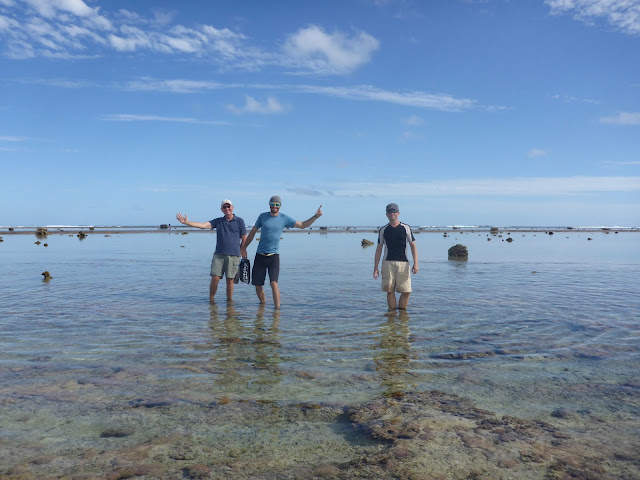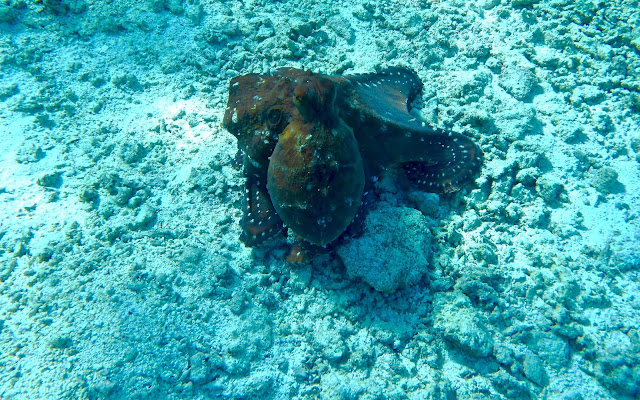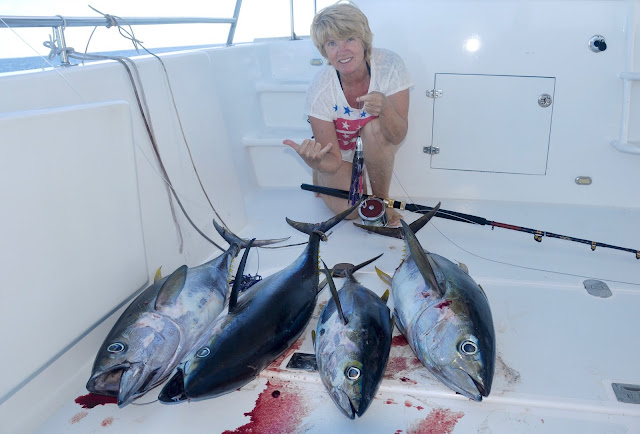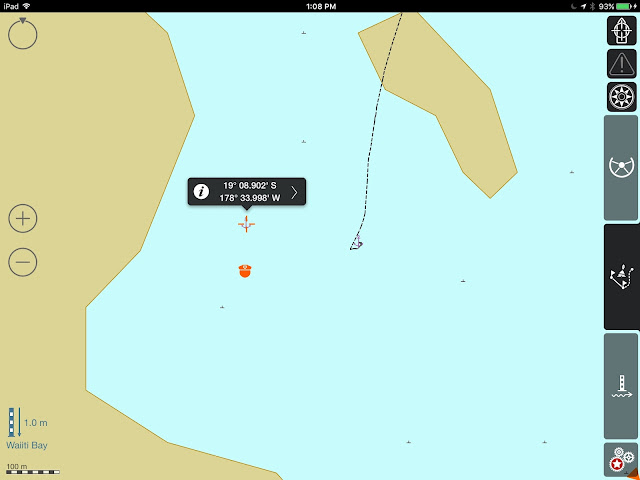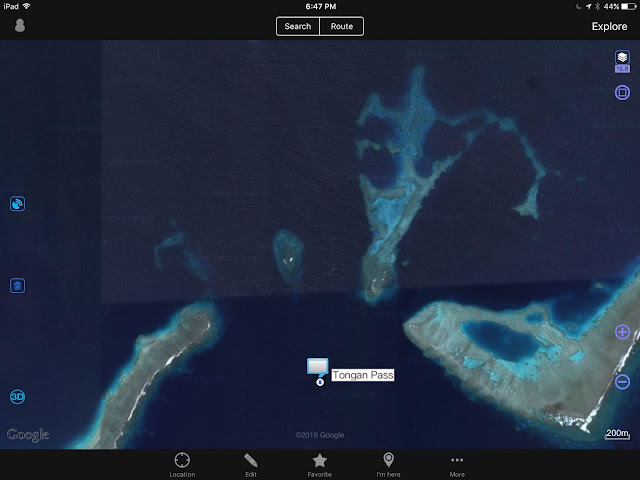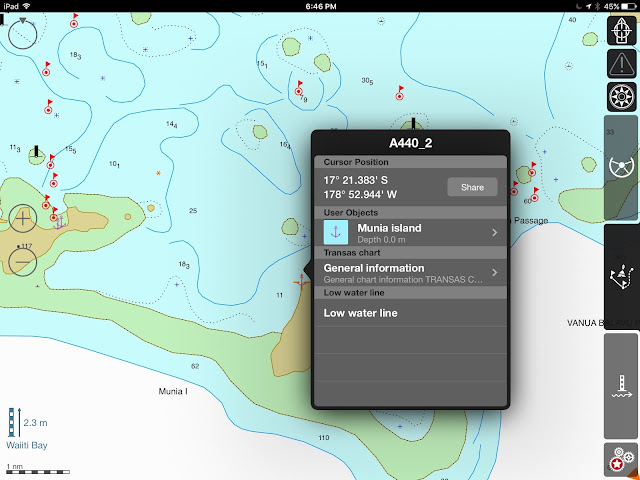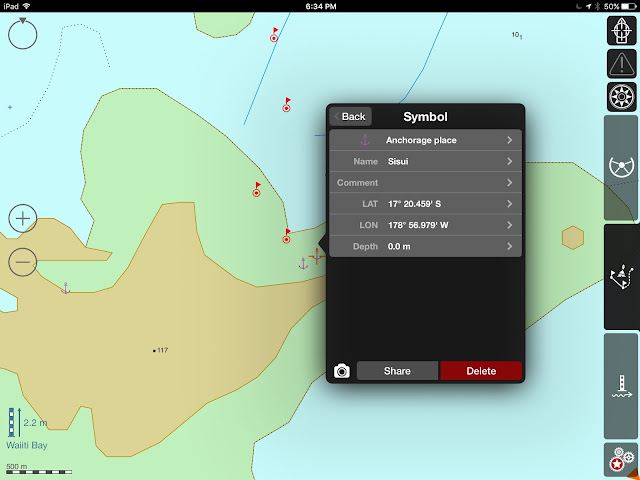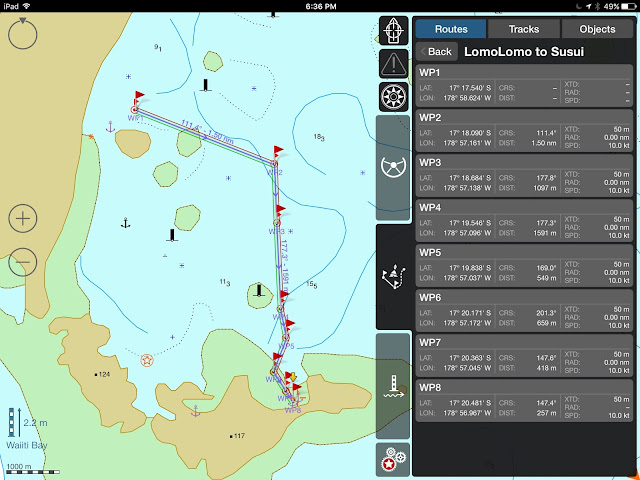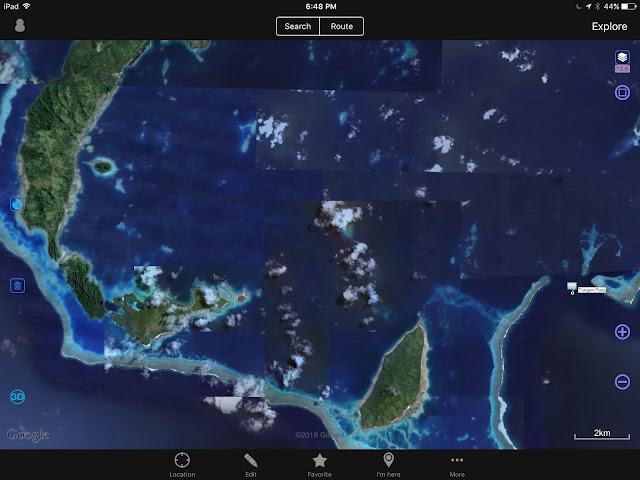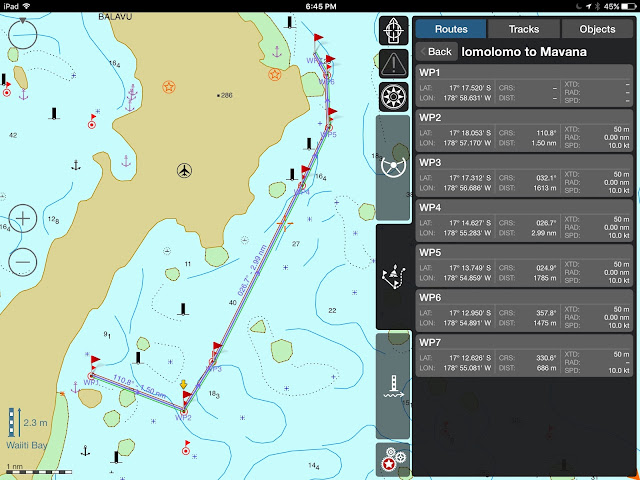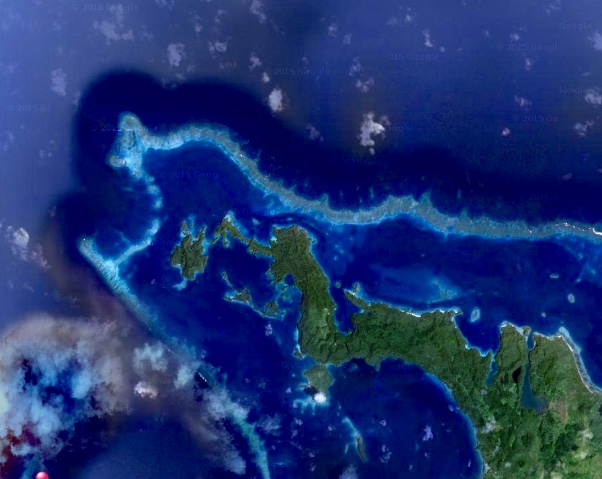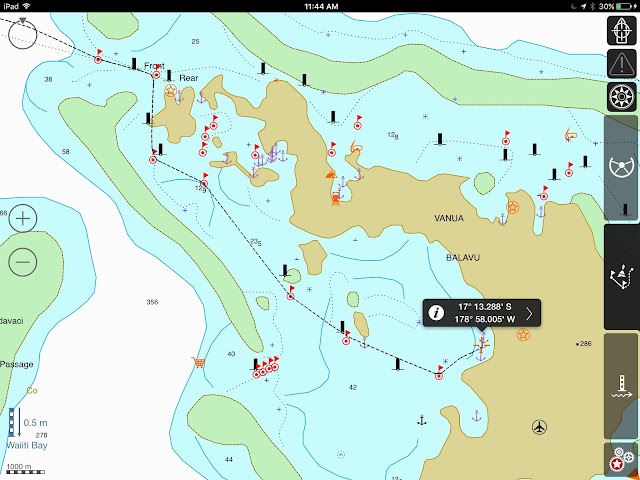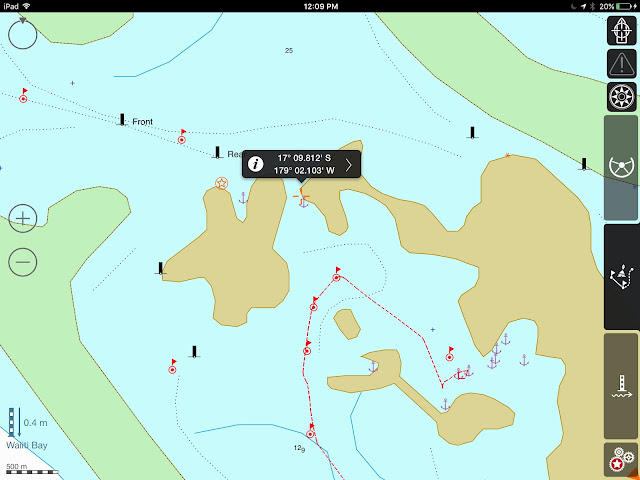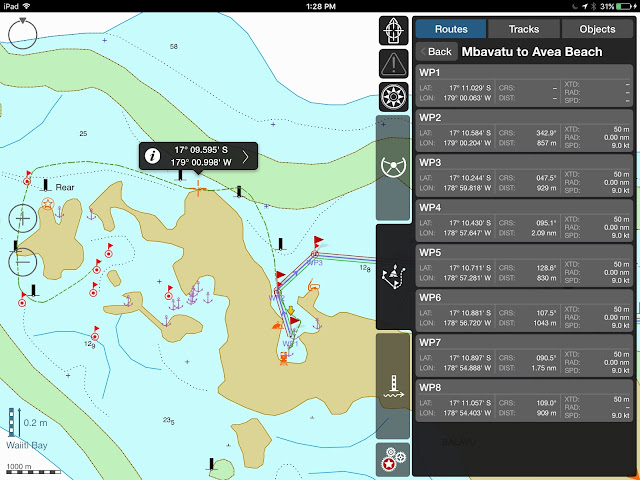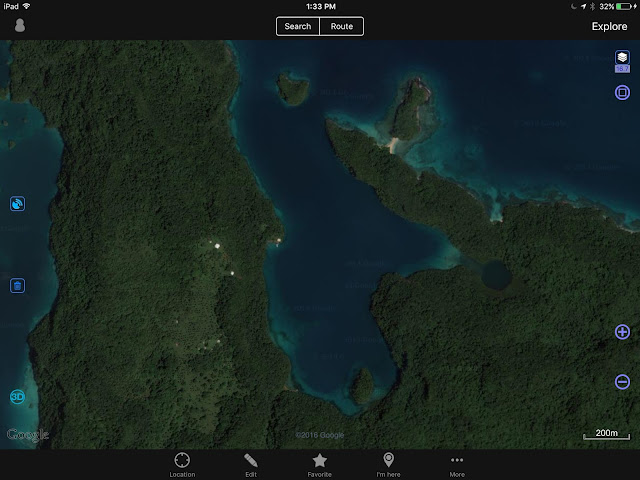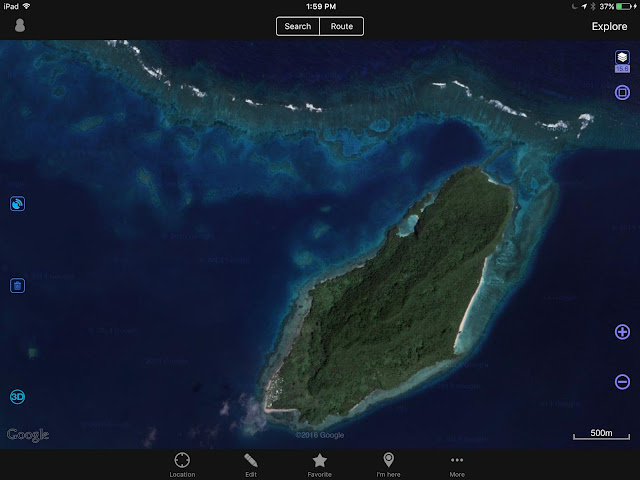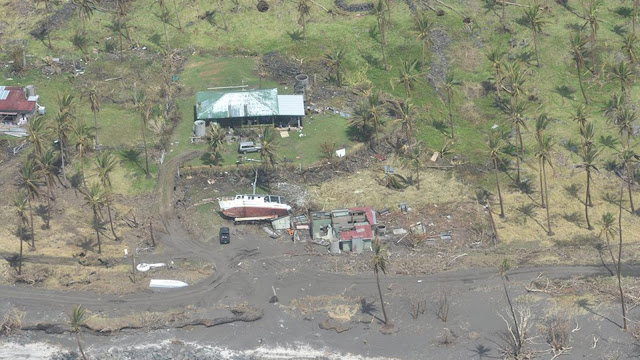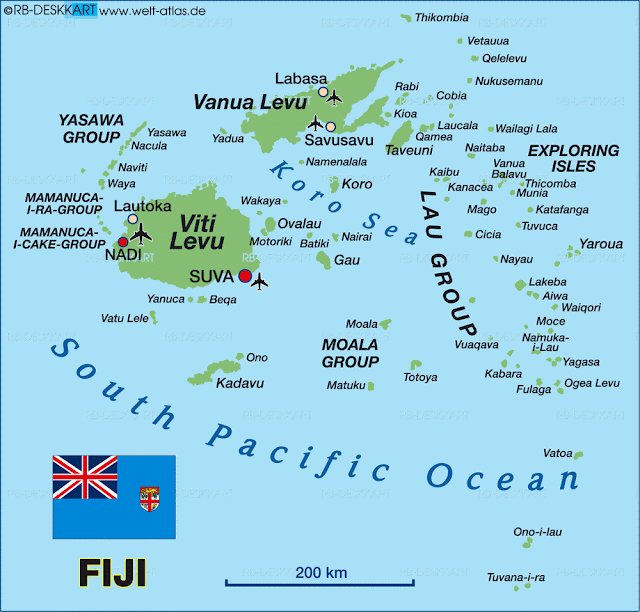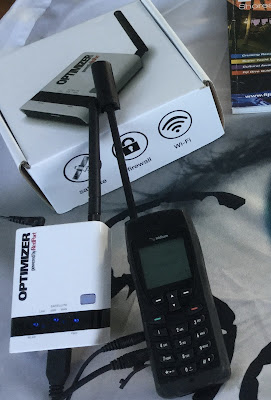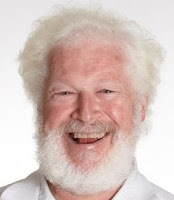 |
| The pass at South Minerva |
MINERVA REEF – SOUTH
Friday May 13, 2016
23*56S – 179*06W – Back to the West… and gained a day!
Friday the 13th! What a day to arrive at one of the most isolated atolls in the world, under gloomy skies and drizzle! The Minerva Reef. It only took us 3 1/2 days to make the trip from 780 NM from Opua, always thankful to our faithful John Deere engines who like to push us at 10 kts at 1000 rpm. But on this trip, we had to slow down as not to arrive at Minerva in the evening. So we travelled at 9 kts, at 900 rpm, burning 3 gallons per hour. At sunrise, in front of the entrance of South Minerva Reef, we dropped the fishing lines overboard and were rewarded with an almost-instant double hookup of yellowfin tuna. Kept one!
 |
| South Minerva Reef waypoints |
NAVIGATION NOTE – There are 2 entrances: the north and the south channels of the western pass. We took the north channel, at low tide (using the Raoul Island Tide Table,) with the reef very visible on starboard, straight through and across the lagoon to the anchorage close to the beacon; no problem spotting bommies. The south channel is also a possibility, but one needs to take a sharp turn to port in order to avoid the rock in front of the pass. Note that the light charted on top of the rock at the entrance no longer exists. However, there is a working beacon on the east end of the reef, flashing 1” on, 3” off (messes up the view of the stars!!!)
 |
| With an eye on the weather, always! |
Here, there is no land; here, there are no trees; here, there are no birds. There is only a ring of coral pounded by the long Pacific waves, their spewing foam the singular telltale of the reef’s presence and the primary clue to the mariner that this 5 x 3 miles obstruction to his progress exists. How many yachts have crashed on this hidden reef? Just a few years ago, a yachtie had not zoomed low enough into his electronic chart, had no idea that the reef was there and crashed into it, lost his yacht.
 |
| Checking in with Northland Radio and the Pacific Seafarers Net (14300 kHz @0300 UTC) |
“Gin-clear water” is an expression I’ve heard before, but even in the Tuamotus I’ve not really, really seen it. Well, this is gin-clear water. The seas break over the reef and the water is filtered by the reef, with constant flow. It wasn’t until the third day at anchor, once the clouds had dissipated, that we realized how special this place is. Of course, we are the only boat for hundreds of miles around, which may seem a bit eery to you but is entirely satisfactory to us. Anchored in 10 meters of water in the middle of the Pacific Ocean!
 |
| Sea Urchin |
And the fauna? Giant clams are really, really giant, the way we used to see them in Bora bora 25 years ago, and they are everywhere: just pick them up off the seafloor, try not to strain your back throwing them in the dinghy…
 |
| Giant Clams heaven! |
Lobsters are a bit trickier to find. The first day, we found a bommie with at least 10 enormous spiny lobsters, the kind with long, white antennae, that are so skittish that they hide the moment they feel your disturbance in the water. Sill, JP managed to shoot one (about 4 lbs!) but had all the trouble in the world getting it out of its hole, as it was clinging with amazing strength to the rocks, helped by its companion who clung to it till the end.
 |
| “White Antenna” is the tip-off… |
The next day, we found another bommie with just 2 lobsters, again enormous, the kind with blue eyes and electric-blue cartilage at the base of the antennae, bumps all over the body (instead of spines). That one decided to run back into its hole with JP’a arrow and it was a nail-biting experience to watch JP wedge his entire body in the hole to try to get his arrow back. A good 20 minutes later, he got his arrow and lobster, another 4-lb beauty.
 |
| “Blue Antenna” beauty |
And today, we snorkeled for 4 hours, covering almost a mile of reef, and didn’t see a single antenna. So, you see, don’t believe everything they say about this place, the lobsters don’t exactly crawl up your anchor chain. Two lobsters in 20 man-hour of hunting is not a stellar performance!
 |
| Cleaning a giant clam: Muscle in sashimi, lips pressure-cooked for an hour, then in curry & coconut milk sauce |
Sharks are pretty territorial here. Although they check us out and usually leave us alone, these white tips let us know when they want us out of the water. This morning, we dropped on a mama shark and her pup who were obviously hunting. Within seconds, the mama was charging me, clear in her message that she didn’t want us around. Like a good son, the little one followed suite and charged me too! Pointing my slingshot in their direction, I swam quickly backwards to the dinghy, JP and I covering each-others’ backs, and we got away from the hunting territory.
 |
| Gin-clear water |
Sunny days like today are spectacular. So clear is the water that I can see JP dive some 100 meters away and not have to look for his snorkel above water. Coral blocks and canyons are home to yet new varieties of fish we had not seen before: black Trevally, Dotted Sweetlips beyond 1m long, orange-gold and black Silver Sweetlips, all really tempting to hunt. But with the shark activity and our fridge full of fish as it is, we don’t need to look for trouble. So, we just enjoy.
 |
| Spectacular coral beds |
Moray Eels of all varieties are everywhere; I reckon I’ve seen at least 5 varieties in the last 2 days: giant Green, peppered, yellow-headed, snowflake, reticulated…
Shells? Disappointing… It seems that the giant clams have taken over all other forms of mollusks. My collection will have to wait, but I managed to find 3 new varieties of cones and a tiny form of abalone.
 |
| Dinner: lobster salad, tuna poki, Giant Clam |
Diet? Try this for lunch: tuna poki, sashimi of yellowfin tuna and giant clams, lobster salad, white cabbage salad (token green stuff;) clam lips in curry-coconut sauce for dinner, lemon Basmati rice. All good!
The anchorage has been uncomfortable. Although it is rather calm at low tide, it is incredibly rolly as soon as the waves break over the reef. From mid-tide, to high tide, to mid-tide, it’s 6 hours of rock and roll, and since the last 3 days have seen swells in the 3.5 meter range outside the reef, we have been rolling in our bed at night… not the most pleasant.
But it’s a small price to pay to see the biggest, most electric green flash ever! And the stars!!! Shooting stars!!! We are totally alone… and loving it! It will be another 2 or 3 days yet before the rest of the Sea Mercy fleet catches up with us.
Till next time….
dominomarie






